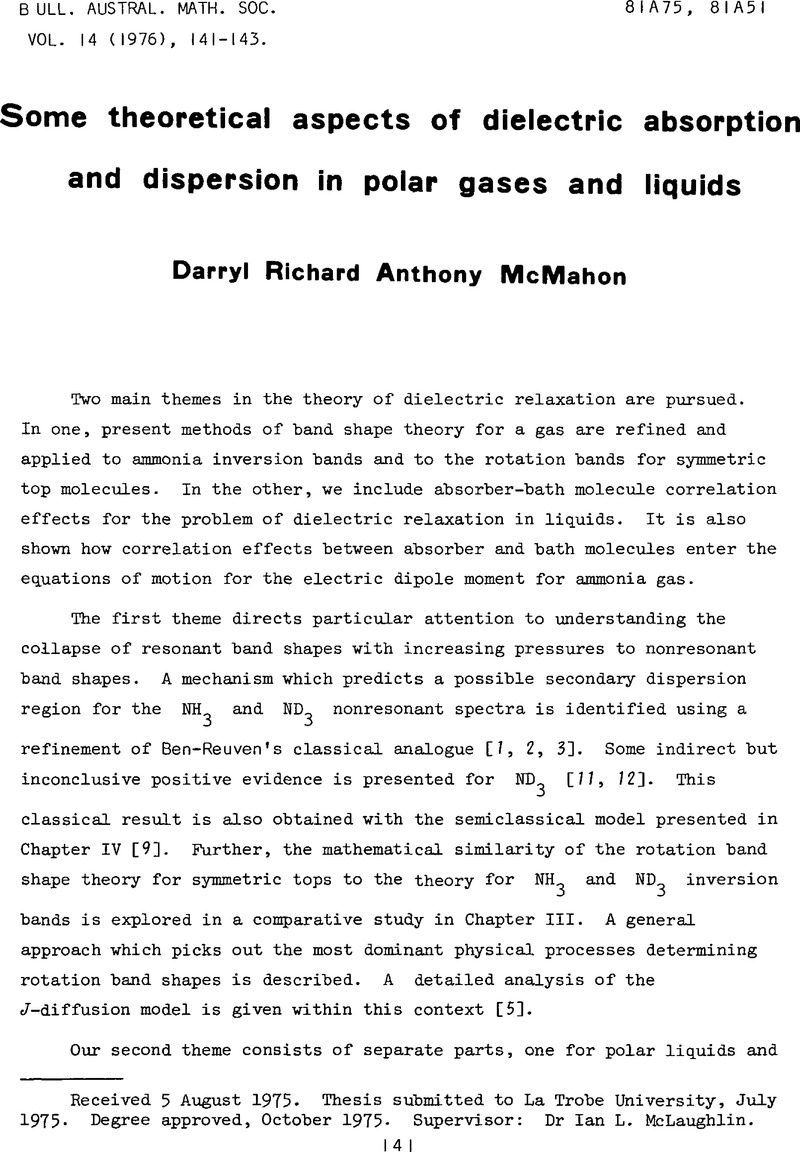No CrossRef data available.
Article contents
Some theoretical aspects of dielectric absorption and dispersion in polar gases and liquids
Published online by Cambridge University Press: 17 April 2009
Abstract
An abstract is not available for this content so a preview has been provided. As you have access to this content, a full PDF is available via the ‘Save PDF’ action button.

- Type
- Abstracts of Australasian PhD theses
- Information
- Bulletin of the Australian Mathematical Society , Volume 14 , Issue 1 , February 1976 , pp. 141 - 143
- Copyright
- Copyright © Australian Mathematical Society 1976
References
[1]Ben-Reuven, A., “Transition from resonant to nonresonant line shape in microwave absorption”, Phys. Rev. Lett. 14 (1965), 349–351.Google Scholar
[2]Ben-Reuven, A., “Impact broadening of microwave spectra”, Phys. Rev. 145 (1966), 7–22.Google Scholar
[3]Ben-Reuven, A., “The meaning of collision broadening of spectral lines: the classical-oscillator analog”, Adv. Atom. Mol. Phys. 5 (1969), 201–235.Google Scholar
[5]Gordon, R.G., “On the rotational diffusion of molecules”, J. Chem. Phys. 44 (1966), 1830–1836.Google Scholar
[6]Margenau, Henry, “Pressure broadening in the inversion spectrum of ammonia”, Phys. Rev. 76 (1949), 121–124.Google Scholar
[7]Margenau, H., “Inversion frequency of ammonia and molecular interaction”, Phys. Rev. 76 (1949), 1423–1429.Google Scholar
[8]McMahon, D.R.A., “Hindering and memory effects on the distribution of relaxation times in dielectric theory. I. Secondary dispersion regions in n–propanol”, J. Chem. Phys. 62 (1975), 2880–2889.Google Scholar
[10]McMahon, D.R.A., “The NH3 and ND3 inversion spectra - the effect of dipole orientating collisions”, in preparation.Google Scholar
[11]McMahon, D.R.A. and McLaughlin, I.L., “Classical theory of the dielectric loss for NH3 and ND3”, Phys. Lett. 45A (1973), 343–344.Google Scholar
[12]McMahon, D.R.A. and McLaughlin, Ian L., “On the classical microwave and infrared pressure broadening theory for ammonia”, J. Chem. Phys. 60 (1974), 1966–1975.Google Scholar


